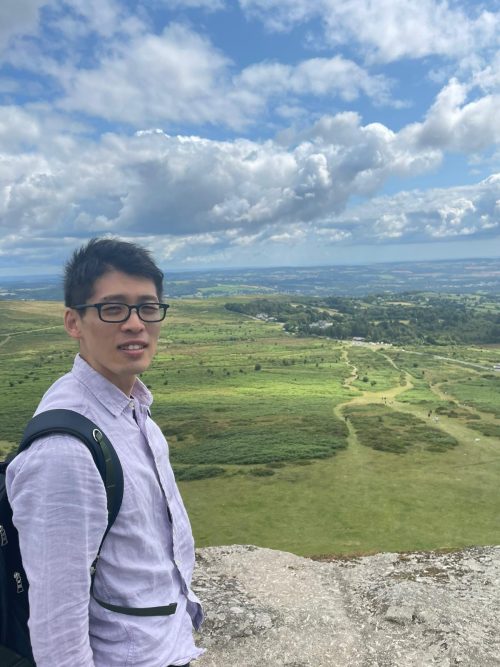SciArt profile: Yoshinari Yoshida
Posted by the Node, on 25 September 2024
In this SciArt profile, we meet Yoshinari Yoshida, a philosopher of science focusing on the conceptual and historical issues in developmental biology. Yoshinari enjoys drawing animals and plants, and have recently got into drawing primates, such as gibbons and orangutans, because of his research into in vitro models in comparative biology.
Can you tell us about your background and what you work on now?
I was born in Milton Keynes, UK, and grew up in Japan. I did my undergrad and Master’s in Philosophy and History of Science at Kyoto University, Japan, and Ph.D. in Philosophy at the University of Minnesota, USA. I am currently a postdoctoral fellow at the University of Exeter, UK. Throughout this academic career, I have studied philosophy of science, with a special focus on conceptual and historical issues in developmental biology. My central philosophical interest is in how various models and representations (e.g., “living models” such as model organisms and cell culture systems, and visual models such as diagrams and illustrations) play their roles in the production of knowledge about generality and diversity in developmental processes. My current project focuses on the prospects and limitations of in vitro models in comparative biology. I try to clarify how in vitro systems, such as organoids, play their roles as models in the context of cross-species comparison and reconstruction of evolutionary history. I examine experimental and inferential practices as well as interdisciplinary interactions among experts to tackle this philosophical question.

Were you always going to be a philosopher of science?
When I was younger, I was rather going to be a scientist. I was a kid who loved insects and extinct animals, and in my teenage era, I enjoyed learning about evolution and embryonic development. But I also liked the philosophical discussions about conceptual questions. When I was in the second year of my undergrad, I took the courses “philosophy of science” and “history of science.” I enjoyed these courses so much, and started thinking that studying these fields would allow me to fulfill both my interest in science and my love of philosophical discussions. I decided to major in philosophy of science, and since then, I’ve been in this field.

And what about art – have you always enjoyed it?
Almost yes. I was already into art when I was very little. I was a kid who kept drawing during lunch break in elementary school as well as after school. My favorite objects were monsters, robots, and manga characters. There were periods in my life when I was a bit away from doing art, such as during high school. But I’ve maintained my interest in art. Several years ago, when I was in my Ph.D., I bought a tablet and started drawing digitally. Until then, drawing had been a private hobby just for myself. But I began posting my artwork on social media and also drawing more constantly.

What or who are your most important artistic influences?
It’s not easy to name one specific artist. (I still lack systematic knowledge of art history.) But I’m often inspired by realistic oil paintings from the modern and early modern periods. My favorite is those paintings that are so realistic that they look as if they are photographs from distance, but consist of explicit strokes when seen closely. Those paintings make me think about how we see the world.

How do you make your art?
Currently I do everything using a painting app called Procreate in my tablet. When I see an object or scene whose shapes, colors, textures, or patterns I find interesting, I take pictures, which I may use as a reference later. Or, sometimes I become interested in a certain animal or plant, and search for images of the animal or plant and then start drawing it.

Does your research influence your art at all (or vice versa), or are they separate worlds?
Art is my major hobby that is a source of joy distinct from research in my life. But I think there are some connections between the two. For instance, I am interested in the role of images in science. I have some articles (one published, one currently under review) about how the use of specific types of diagrammatic representations contribute to knowledge production in science. I am also working on a side project with my colleagues about the role of speculation in evolutionary thinking, in which we discuss the power of illustrations. I think this philosophical interest of mine in images in science has a common root with my artistic interest in drawing and painting. My art is also sometimes influenced by my academic interests. For example, I’ve recently been into drawing primates, such as gibbons and orangutans. This was triggered by my current research project on in vitro models in comparative biology. I’ve read studies that apply advanced in vitro technologies to primates to elucidate human evolution, which made me interested in primates themselves.

What are you thinking of working on next?
There are a few ideas. I want to keep working on primates and drawing as many primate species as possible. That would become an interesting series! I’m also interested in making art that is related to developmental biology. Even though my primary philosophical focus has always been on developmental biology, I’ve not made art about this field. It would be fun to make drawings inspired by the normal developmental stages of chick embryos, mechanisms of collective cell migration, or tissue movements in gastrulation. Finally, I’m interested in trying oil painting. While I’ve drawn only digitally over the last several years, I love seeing oil paintings at museums. That would be an interesting new step.

Find out more about Yoshinari:
Instagram: @yoshinariysd
X/ Twitter: @YoshinariYsd
Personal website: https://sites.google.com/site/yoshinariyoshida/


 (4 votes)
(4 votes)